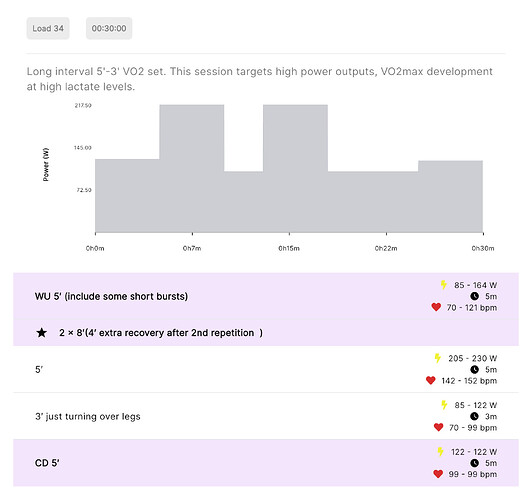Thanks @Pablo_ie,
I’m sorry to hear about your experience with Athletica. Let me clarify a few points.
The core capabilities you mentioned are implemented. It is important to highlight that conservative safety and quality rules sometimes make the system appear slow to react. Thresholds are based on a rolling six-month window of data. They update automatically when one of your personal bests (over any relevant duration) leaves that window. This ensures that only meaningful, sustained changes in performance, not short-term fluctuations, affect your training zones.
Now, it’s also important to highlight that training load and physiological thresholds cannot yet be directly linked in a reliable, causal way. This relationship remains largely unknown, so we rely on maximal efforts to estimate current capacity. Six months has proven, on average, to be a good compromise across athletes: stable enough to prevent noise-driven changes, yet reactive to genuine performance shifts. Maybe depends on some athlete’s characteristics (e.g phenotype) maybe depends on the CP/MAP values themselves. Some users find it too slow, others too fast. This is why we’re working toward letting users select their own window length in the future, though even that would remain an arbitrary choice.
On a broader note, Athletica improves every day. Some improvements are visible; others happen quietly under the hood. Profiling and threshold estimation lies at the core of Athletica, but it’s a face of a giant ecosystem. We continuously refine how thresholds, dynamics, and adaptive behaviours interact, but we sometimes have to prioritise other aspects of the platform first. AI is bounded by both science and implementation constraints, so we need to navigate between features or aspects that can be highly customised and aspects that needs to work well for the average.Yes, if zones changes, workout limits change as well automatically. If you look at your power profile and you select last 6 weeks, or 3 months or the rest of the year, you will notice the changes in MAP and CP thresholds:
Last 6 weeks: MAP 259 W, CP 209 W
Last 3 months: MAP 313 W, CP 225 W
Whole 2025: MAP 357 W, CP 270 W
This is the effects of previous max efforts leaving the a window. Whether this is reflective of reduced workload or absence of max efforts we (and anybody) do not know. This is the refinement loop acting behind the athletica interface, in line we what we say.
If this is not reflected in your training zones updating there might be a problem (issue, bug, sync, update…) that we are not aware of. Your 30:30 are prescribed in the middle of Z6. Erg mode will impose 392 because halfway between 357 (MAP) and 428 (bottom Z7). HIIT science suggest 30:30 to be at 105% MAP, so you could consider based on this number that 374 would be already in Z6 prompting the adaptations targeted by this type of HIIT. However, as you can see, if only the last 6 weeks are accounted for, MAP declined to 259 W. Again, we need to check internally if your threshold is still the same for some tech reasons.

